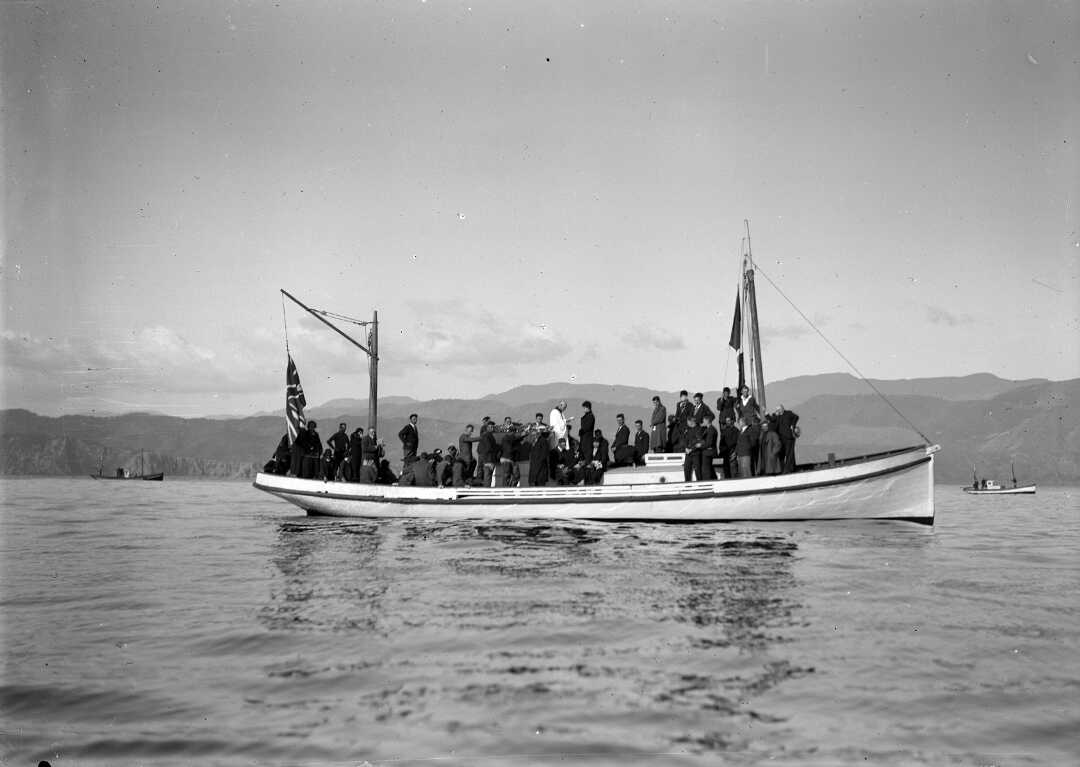After some head scratching, we realised we have a case of an incorrectly placed memorial. The book-like memorial is for Rosina Stirling ‘sister of the above’. M W Dally ‘Mother’…

Chim Chum Gee
This headstone was uncovered by Howard, one of our volunteers at our Tuesday Working Bees. The headstone is for Chin Chum Gee who was found dead in bed on 14th…

Vilhelm Jensen and Hettie Bennett
Vilhelm Jensen was born in Aalborg, Denmark. In 1873 at the age of 12, he travelled by himself on the ship Halcione to New Zealand as part of an immigration…

Loss of the ‘Santina’
On 25 September 1933, seven fishing vessels left Island Bay at 4am that morning for their daily fishing. At 6am a southerly gale sprang up and all of the launches…

Sanders Diamond Wedding
Diamond Wedding – Christmas Day 1934 A tea and social were held on Christmas Day 1934 to mark the diamond wedding anniversary of Mr & Mrs W H Sanders. The…

Liez Family
Channel Islands > France > England > USA > England > New Zealand Thomas Liez (or Leiz) was born in St Peter Port, Guernsey in 1829. The family had been…

Josephine Antoinette MacDonald
‘Having helped many to live, she passed to her rest on the 18th August, 1928 in her 98th year’. She was the daughter of cousins Wilbraham and Caroline Liardet, whose…

Killed by a Tram
On the evening of 28th May 1917, a tramcar motorman was driving his tram towards Lambton Station when a man stepped off the footpath in front of him. He sounded…

Toomath’s Buildings
Toomath’s Buildings We are very sorry to see that the Toomath’s Buildings at 43-47 Ghuznee Street will now be demolished after the recent fire there. The classical Edwardian building was…

George Hutton Poynter
‘he was of a lovable disposition and widely respected’. Recently one of George’s descendants, Carol Bennett, contacted us seeking information on his grave. She has kindly shared this photo of…

